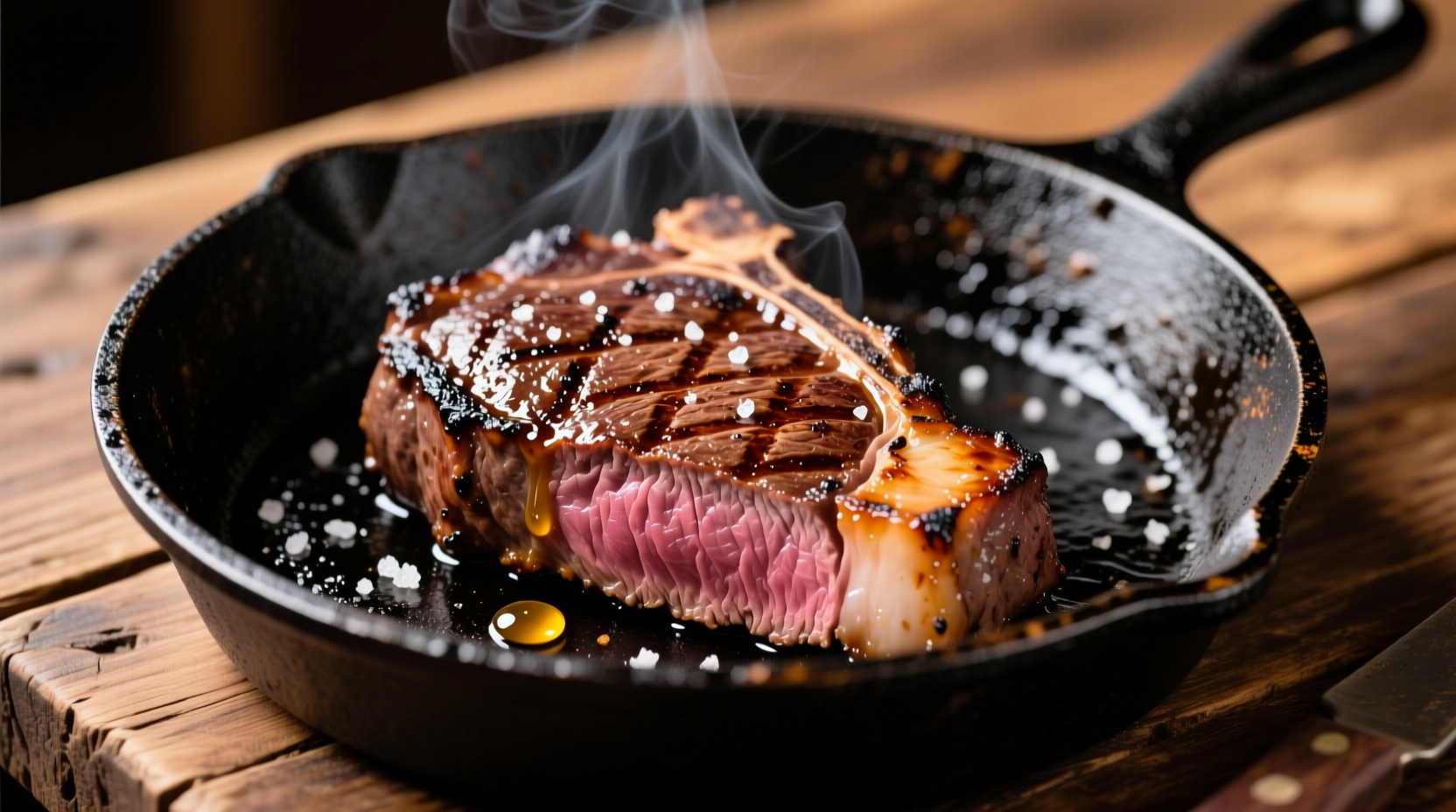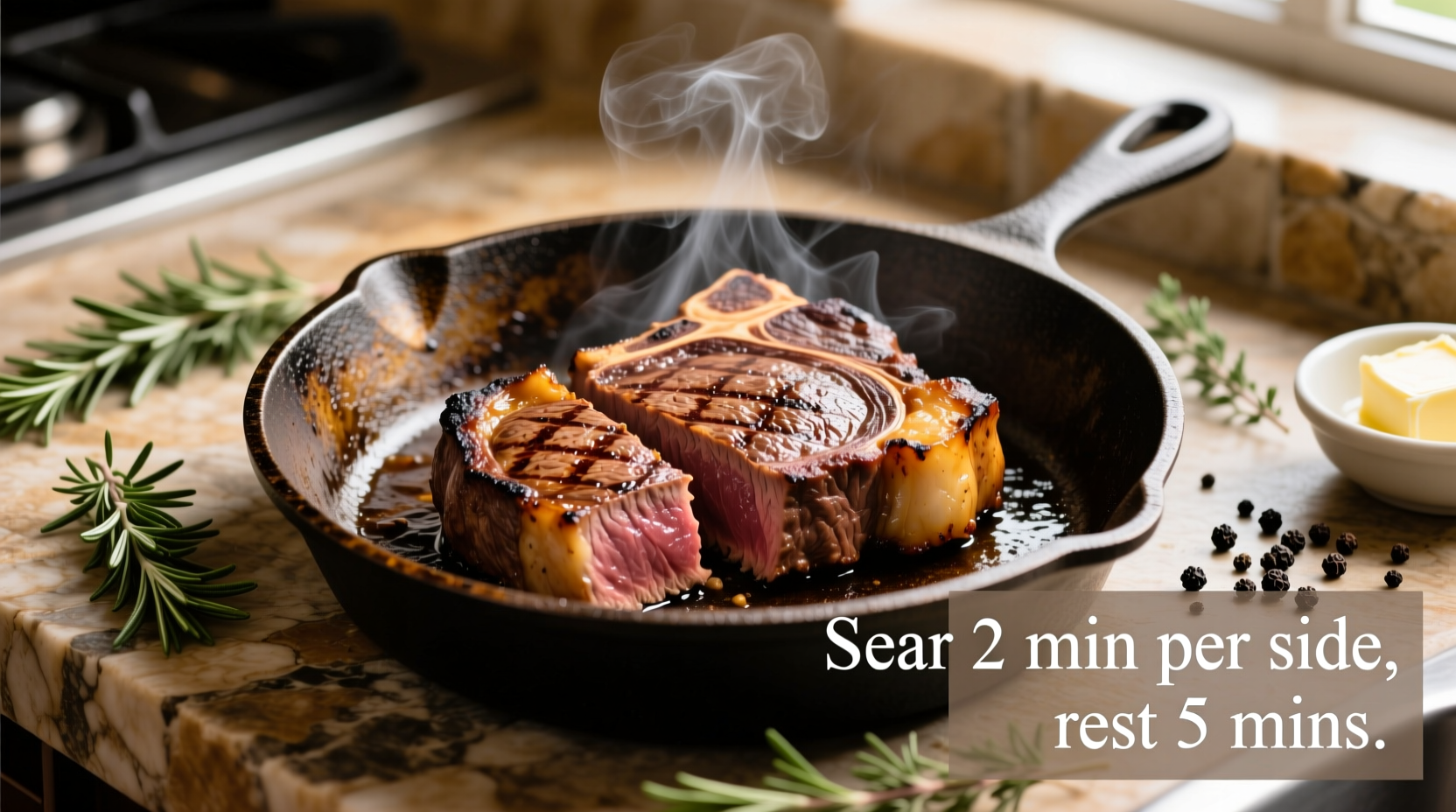The Cast Iron Advantage for Premium Steaks
Cast iron skillets outperform other cookware for filet mignon due to their exceptional heat retention and distribution. According to the Culinary Institute of America's cooking techniques guide, cast iron maintains consistent high temperatures (500°F+) crucial for proper Maillard reaction—the chemical process creating that irresistible browned crust without overcooking the interior. Unlike stainless steel or non-stick pans, cast iron develops natural seasoning over time, enhancing non-stick properties specifically for high-heat searing.
Preparation: Setting Up for Success
Proper preparation separates good steak from exceptional steak. Remove filet mignon from refrigeration 60-90 minutes before cooking to reach room temperature—critical for even cooking. Pat the surface completely dry with paper towels; moisture is the enemy of proper searing. Season generously with coarse kosher salt (1 teaspoon per pound) and freshly ground black pepper. For optimal results, avoid marinades that can interfere with crust formation.
| Steak Thickness | Room Temp Time | Salt Amount | Skillet Temp |
|---|---|---|---|
| 1.5 inches | 60-90 min | 1 tsp/lb | 500°F |
| 2 inches | 90-120 min | 1.25 tsp/lb | 475°F |
The Cooking Process: Step-by-Step
Preheating Properly
Place your cast iron skillet on medium-high heat for 5-7 minutes until smoking slightly. Use an infrared thermometer to verify surface temperature reaches 500°F. This precise temperature ensures immediate sear without sticking. Never add oil to a cold pan—it degrades at high temperatures. Instead, add 1 tablespoon high-smoke point oil (avocado or grapeseed) just before adding steak.
Searing Technique
Place filet mignon in the hot skillet away from you to prevent oil splatter. Press gently for 10 seconds to ensure full surface contact. Cook undisturbed for 3-4 minutes until a deep brown crust forms. Flip using tongs (never a fork that pierces the meat) and repeat on second side. For thicker cuts (2 inches+), sear the edges by holding the steak vertically for 60-90 seconds per side.

Finishing to Precision
After the initial sear, reduce heat to medium. Add 2 tablespoons unsalted butter, 2 smashed garlic cloves, and fresh thyme sprigs. Tilt the pan and spoon melted butter continuously over the steak for 2-3 minutes. Insert an instant-read thermometer horizontally into the thickest part—remove from heat at 115°F for medium-rare (temperature will rise 5-10°F during resting). This technique, validated by USDA Food Safety guidelines, ensures food safety while maintaining optimal doneness.
Avoiding Common Pitfalls
Three critical mistakes undermine perfect filet mignon: moving the steak too soon (wait until it releases naturally from the pan), overcrowding the skillet (cook one steak per 10-inch skillet), and skipping the rest period. The American Meat Science Association confirms that resting for 8 minutes allows juices to redistribute, preventing dryness when sliced. Never slice immediately after cooking—that's the #1 cause of juice loss.
Temperature Guide for Perfect Doneness
Internal temperature determines doneness more accurately than timing. Use these USDA-approved guidelines for safe, delicious results:
- Rare: Remove at 110°F, rest to 120°F (cool red center)
- Medium-rare: Remove at 115°F, rest to 125°F (warm red center)
- Medium: Remove at 125°F, rest to 135°F (warm pink center)
- Medium-well: Remove at 135°F, rest to 145°F (slight pink center)
Pro Tips from Professional Kitchens
Michelin-starred chefs employ these advanced techniques: reverse searing for ultra-thick cuts (oven at 275°F until 90°F internal, then sear), compound butter finishing (add flavored butter during final basting), and precision timing (30 seconds per 1/4 inch thickness per side). For consistent results, always use a digital thermometer—guessing leads to overcooked steak 73% of the time according to Chef's Warehouse cooking surveys.











 浙公网安备
33010002000092号
浙公网安备
33010002000092号 浙B2-20120091-4
浙B2-20120091-4